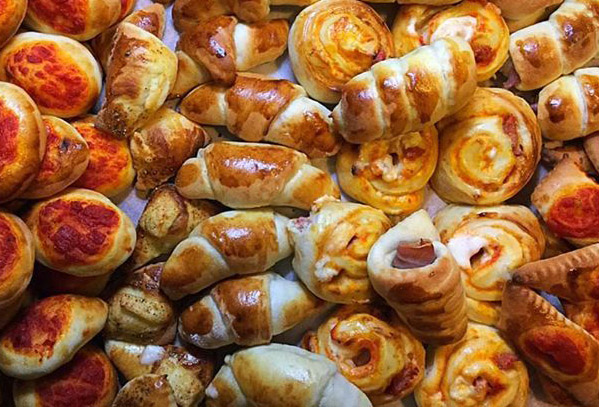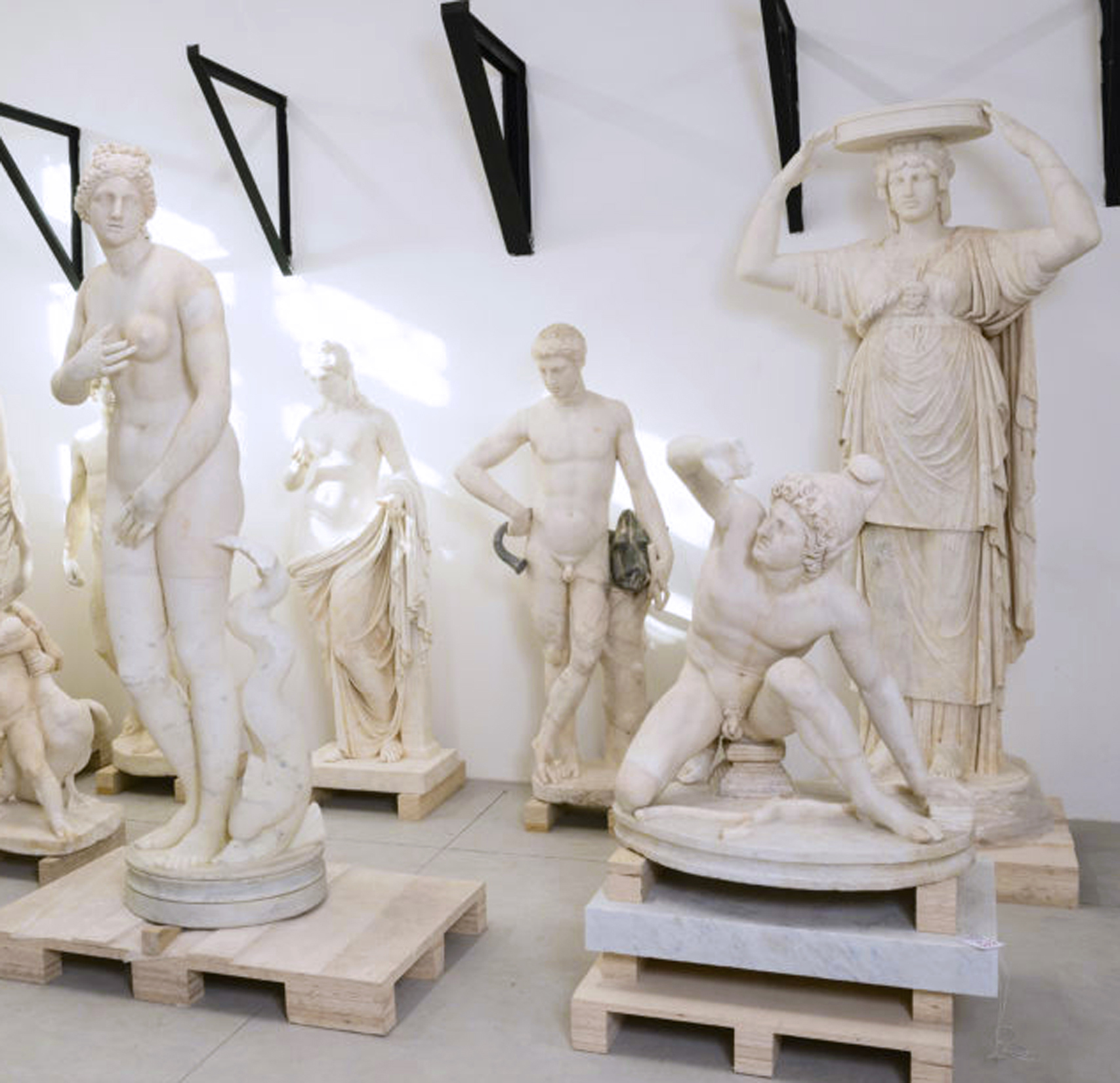The people of Palermo have a long tradition of using every part of an animal for food. Borne out of necessity, impoverished families could sustain themselves on dishes prepared with parts that a slaughterhouse would typically not find readily marketable – entrails, lungs, spleens, as well as other organs and glands. Yet, what was once slaughterhouse waste is now front and center as the street food of Palermo. We have selected seven street food dishes to include in our culinary itinerary: Arancina; Panino con Le Panelle; Pani ca Meusa; Frittula; Stigghiola; Sfincione and Pezzi di Rosticceria.
Arancina, as readers of the Italian Tribune know, are deep-fried rice balls. The standard variety in Palermo is about 3-1/2 inches in diameter, but if you want to go all in, there is the Arancini Bomba, which is twice the size. It is perhaps the only food with its own patron saint, Santa Lucia. It is usually offered with two traditional toppings, Carne – a meat-based sauce or Burro – a béchamel sauce with cheese and ham. Panino con Le Panelle are crisp fried chickpeas on soft sesame-seeded buns and are one of the favorite foods found on the street food tours.
It is once we approach Pani ca Meusa that the true essence of letting nothing go to waste really takes on meaning. Pani ca meusa, or Pane con le milza, is a sandwich served on a sesame seed bun, but it is otherwise nothing like a hamburger. Made from the spleen, lung and trachea of a calf, some claim that it tastes like chicken liver, while others feel that the taste is unique and cannot be readily compared to anything else. There is broad disagreement among those who either love or hate the sandwich, where slices of organs are cooked together over a low heat with lard in a copper pan. Pani ca meusa comes in two varieties – Schietta, which means single and only contains the above-mentioned ingredients and Maritata (married) which adds ricotta cheese on top.
Frittula or Frittola is another traditional Sicilian street food that is kept in a panaru – a wicker basket covered with a cloth napkin which keeps the temperature of the food high. When you order frittula, it is almost a ritual. The vendor dips his or her hand beneath the napkin without looking and comes out with a handful of a mysterious product which is handed to you in a cone of wax paper. No one is allowed to peer beneath the cloth. The original recipe dates back to the 15th century. The raw ingredients used to cook the frittula are the result of butchering a calf, using pieces of meat and cartilage considered waste products. The shredded meat is boiled and then compressed (to remove the moisture) into small blocks or bales. Almost like freeze drying, this can preserve the frittula for years. When ready to be cooked, these little bales of meat are revived by frying in lard, adding black pepper and bay leaves. It is the mixture of fried meat and spices that is stored inside the wicker basket.
On the streets of Palermo, skewered spirals sizzle atop grills, beckoning passersby with the aroma of fire-cooked meat. This is stigghiola, a delicacy consisting of lamb or calf intestines. Since the offal’s juices will provide plenty of flavor, vendors known as stiggiholaros, lightly season their offerings by stuffing them with chopped onions and parsley or even winding the intestines around a spring onion. Once the stigghiola becomes crispy, the vendor simply adds a bit of lemon juice, then cuts the long tubes into small discs. The resulting morsels should be the perfect blend of smoky and succulent.
Sfincione palermitano is one of the best Sicilian street dishes and is an absolute must to sample. Sfincione lies somewhere in the spectrum between a pizza crust and bread; more like a soft focaccia. Those in the know will tell you that sfincione palermitano must mature 24 hours in a refrigerator to allow the enzymes to feed on the starches. Whatever the science behind it, this soft creation is seasoned with tomato sauce, onion, caciovallo cheese, anchovies and finally, olive oil. Although this may sound fairly heavy, it really isn’t. It is, however, highly addictive!
One of the first solid foods that Sicilian children eat is Pezzi de Rosticceria and the delightful flavors will accompany a Sicilian for the rest of his or her life. Pezzi are made of dough that has been baked or fried and stuffed with a wide variety of fillings. All over Italy, in fact the world, countless bakers try to make pezzo, but it seems never to be the same as in Palermo. The list of ingredients is simple enough: flour, sugar, salt, lard and yeast. Once that part is finished, the pezzo comes with a seemingly infinite variety of fillings and shapes. These include the calzone, which is baked and stuffed with ham and mozzarella. Familiar to almost everyone in the United States, it is the perfect street food to try in Palermo for comparison. If you would like it with tomato sauce, ask for a pizzotto and it is also popular with a béchamel sauce. Spiedino is fried rather than baked and is stuffed with ground beef, peas and tomato sauce, while if it is baked, it becomes the Ravazzata. Regardless of the shape or the name, it is a delightful addition to the remarkable street food culture of Palermo.





